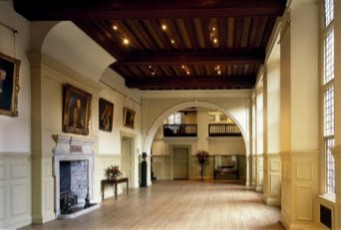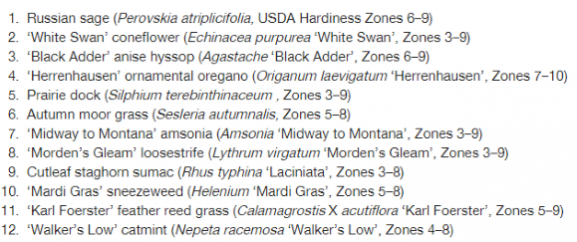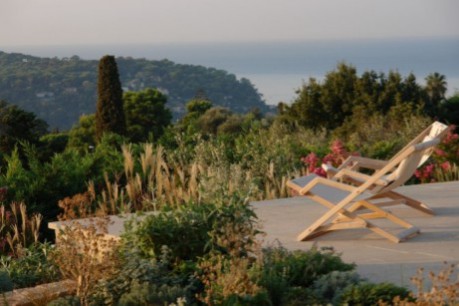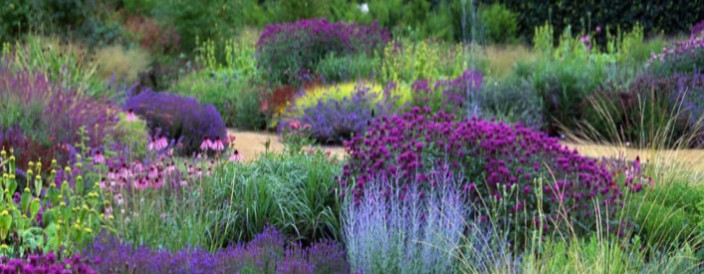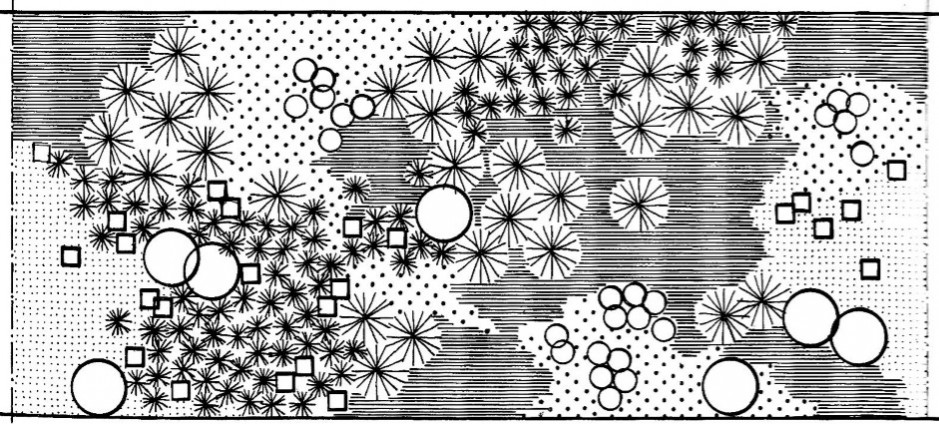“Garden Design: Matrix planting is where a single species, or handful of species, dominates the planting, forming a matrix into which other plants are blended.” – Piet Oudolf.
At the end of March, I was fortunate enough to attend the Society of Garden Designers Spring Conference held at the Royal Geographic Society in Kensington, London; a venerable building designed by Richard Norman Shaw in 1872.
The theme of the conference was ‘Beyond Borders; Into the Long Grass’, looking at new principles of planting with particular reference to the inclusion of grasses and native wild plants within residential and public gardens internationally. The grouping of such planting is directly influenced by its immediate context and purpose; always underpinned by respect for natural growth habit and wildlife habitats. Matrix planting can be extremely useful in a variety of applications. For example; when a formal garden meets neighbouring countryside or parkland, there may occur a visual dilemma resulting in a rather uncertain ‘no man’s land’.
The naturalistic ambience of matrix planting can soften or blur this junction, resulting in a seamless transition between formal and wild areas. It is also has useful applications in the regeneration of urban sites as the plant selection will be specifically selected to thrive in such conditions. This is shown to great effect in one of the conference’s guest speakers, Sara Price, who is responsible for much of the planting at Olympic Village – an area of regeneration in the East End of London used to house the 2012 Olympic Games.
Garden designer Sarah Price (below) with her matrix planting design for an area of public walkways at Olympic Village. This extract from the gardening blog accurately describes Price’s approach to the design of this garden “After starting her own company in 2006, Price has gradually nabbed some of the most prized landscape commissions in England, including the Whitworth Art Gallery. Known for her moody, poetic combinations of structural plants, Price’s plantings convey a rare combination of delicacy and strength. For the Olympic Park, Price developed the spatial design and detailed planting plans for the gardens.
“There are four gardens that run in sequence and form a “timeline.” Each garden represents a different region: Western Europe/The Mediterranean/Asia Minor, the Temperate Americas, the Southern Hemisphere (particularly South Africa, Australia, New Zealand), and Temperate Asia (China, Japan, Himalayas). The gardens are composed of three main elements: clipped formal evergreen hedges that create a permanent structure; monocultural ‘strips’ of ornamental grasses or structural perennials that frame the main components of the gardens: the ‘field’ plantings’ that determine the character of each garden.”
Visit Sarah Price’s website for more examples of her distinctive approach to garden design. Another good example of the matrix approach is this garden in central Illinois by Adam Woodruff; plant identification is helpfully provided. For further information on the planting of this garden, visit the fine gardening website.
Scape Design, a Monaco based landscape and garden design practice owned by James Basson describes matrix planting as “ … based on the idea that in nature plants form self-sustaining communities which exclude outsiders, like weeds, while nourishing and protecting those within the community. Matrix planting seeks to replicate these communities in the garden and, in the process, eliminate the need for hoes, weeding, shovels, and watering cans.
The driving force of matrix planting is matching the right plant to the right community in the right soil. Matrices take a few years to becomes established, but, in the end, greatly reduce the amount of resources put into your garden.” (Below) Indigenous Mediterranean matrix planting in the south of France as exemplified by James Basson of Scape Design. An acknowledged master and pioneer of this style of garden design is of course Piet Oudolf who has an encyclopaedic knowledge of botany and terrain.
His website holds a wealth of information about naturalistic and matrix planting with dozens of inspirational images. His garden design for Scamston Hall in North Yorkshire juxtaposes traditional English formality with diagonal swathes of mass-planted grasses in a scale entirely in keeping with the grandeur of their context.
This distribution of garden design planting by Roland Byass (above), a London based landscape architect, reproduces the way in which plant communities of different species arrange themselves in landscapes where ecological processes of colonisation and succession are taking place. A few large ’emergent’ plants are scattered through the planting, with much greater numbers of smaller ground cover matrix plants. Planting such as this is not (as is sometimes assumed) maintenance free. But its maintenance needs are less than more regimented, ‘horticultural’ planting design. What planting like this needs is occasional intelligent intervention rather than constant management. The arrangement of species – not jumbled together any old how but distributed according to their habit of growth and reproduction – allows for change over time, without compromising the character of the plant community.
A significant garden design practice, formed by the partnership of two designers who were already recognised in their own right, Christopher Bradley-Hole and Brita von Schoenaich, is BHSLA. Bradley-Hole describes their philosophy as “Focusing on the relationship between buildings and their surroundings, and an underlying philosophy of pure spaces and mathematically harmonious proportions permeates our work. We aim to explore essential forms and spatial relationships and the ambiguity created when a building meets the land surrounding it. Particular emphasis is placed on design and construction details and design solutions that reflect the geometry and philosophy of associated architecture. Our horticultural expertise allows BHSLA to innovate successfully with dynamic vegetation concepts often set within an architectural framework.”
Above, Christopher Bradley-Hole, Brita von Schoenaich and their plan and images of a completed garden design project at Crockmore House, Oxfordshire. This style – or should it be ‘principle’ – of respectful, ecologically sound, reduced maintenance and visually dynamic practice, is representative of the current wave of advanced thinking within the garden design community. It is not intended to replace the traditional or any other approach; it is there to be explored, advanced and adapted, as genuinely innovative concepts of quality always will be. Well done to the Society of Garden Designers for their extremely enlightening event and well done also to those practitioners whose botanical and philosophical development ensures that the future of garden design remains bright.
For further information visit the Society of Garden Designers.
Until next time, Anthony.
